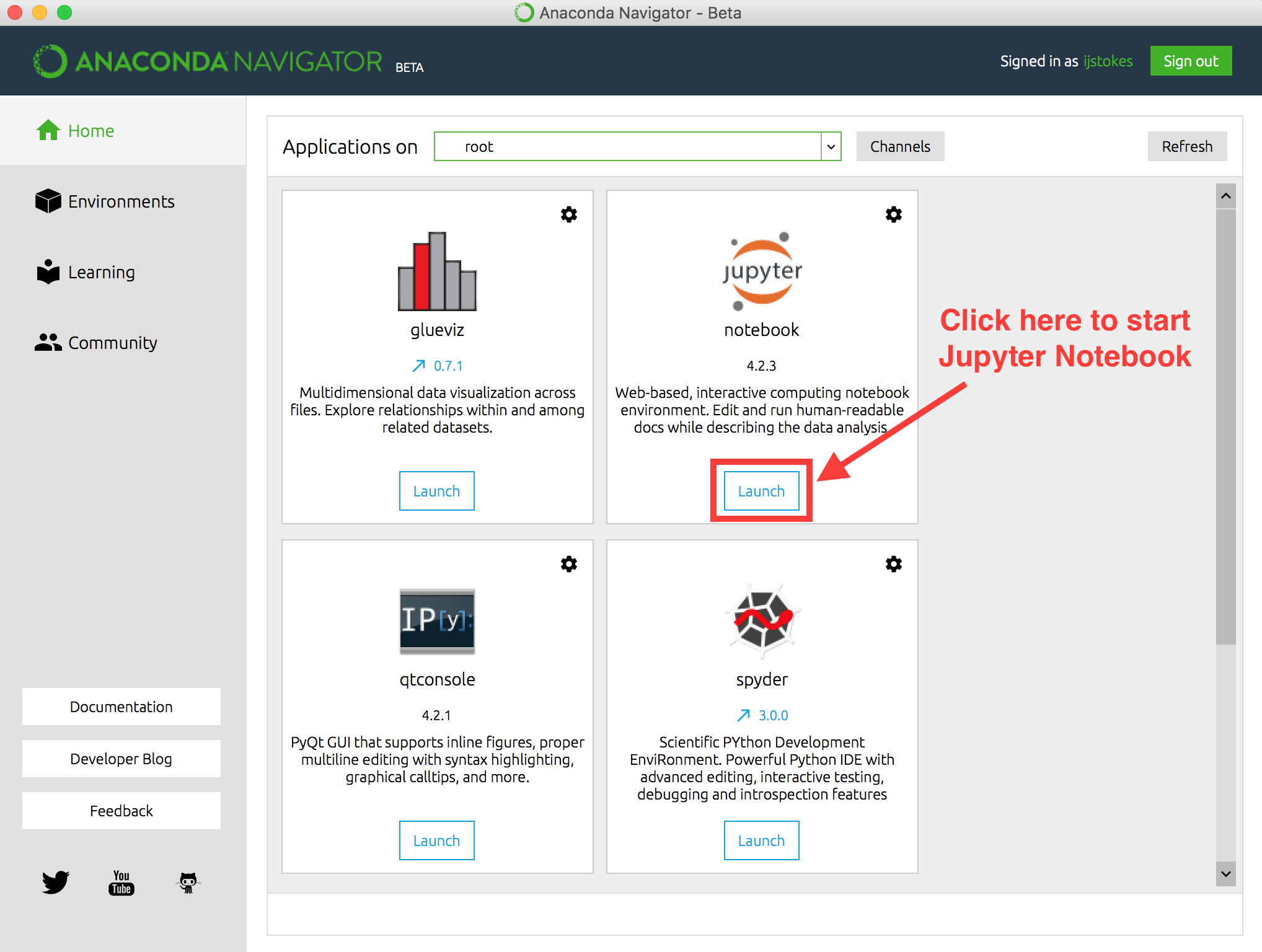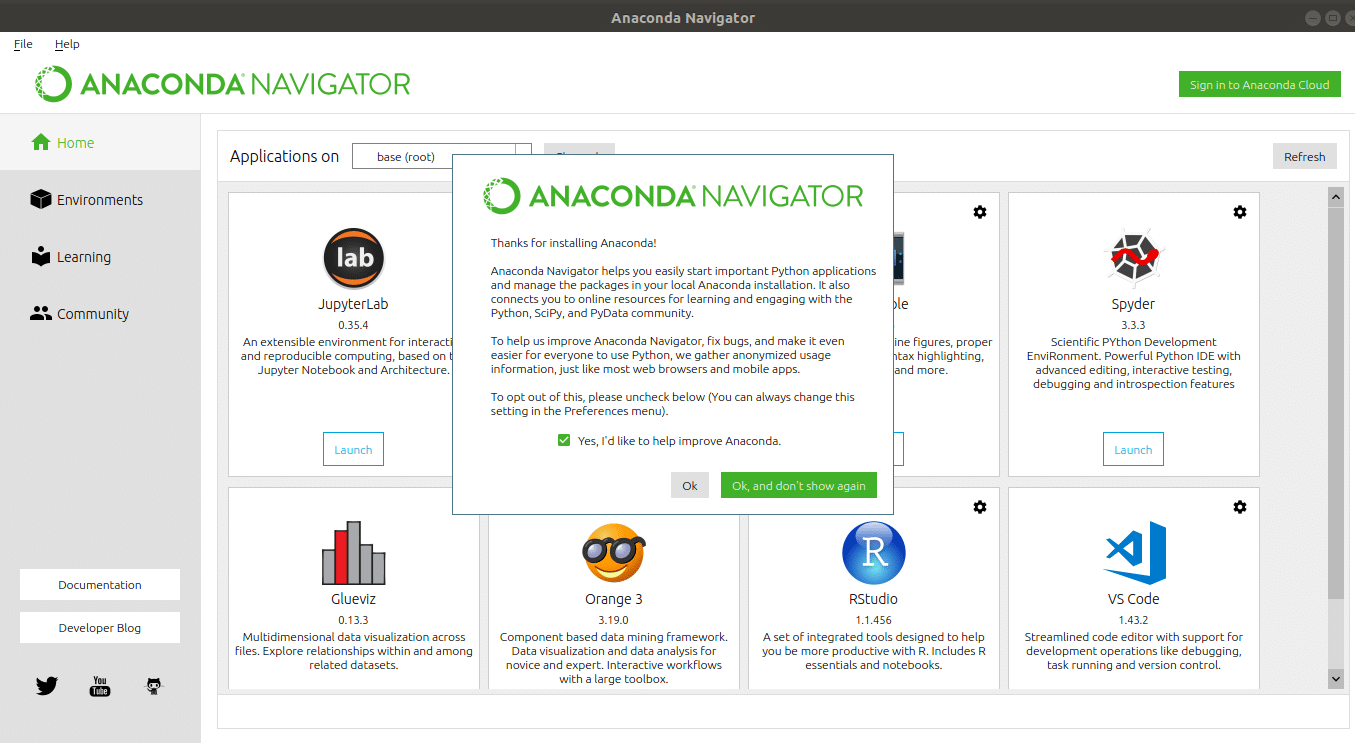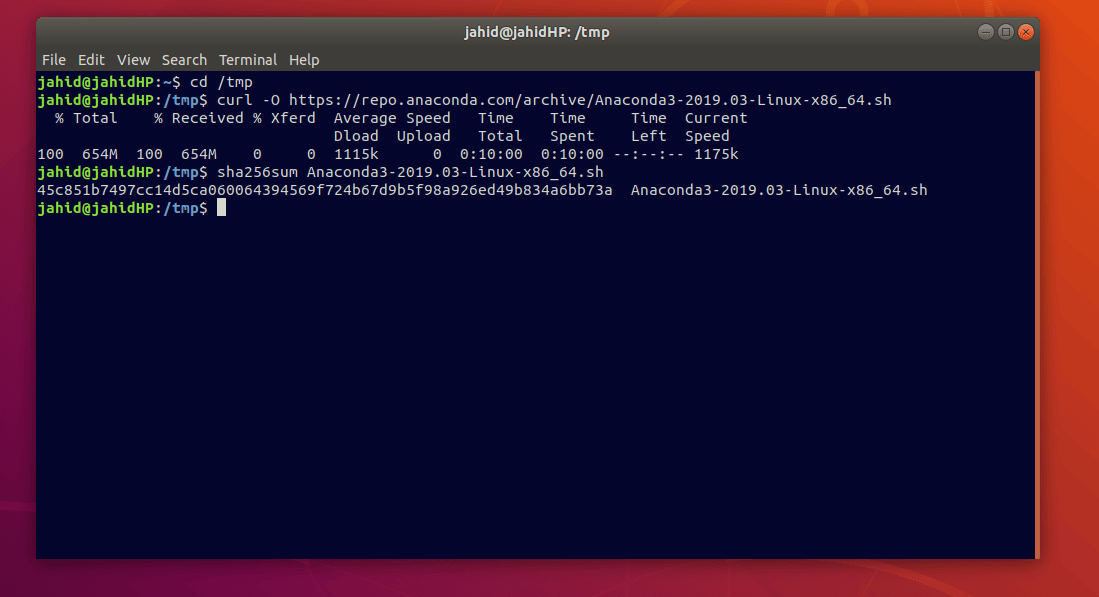Anaconda (listed as 'Python 3.6.0 (Anaconda 4.3.1 64 bit)' ) is in my programs and features list, but there is seeming no Anaconda Navigator desktop app, as their seems to be no icon on my desktop and I am unable to search for it through 'Start'. Could this be because I have the 32-bit version of Anaconda downloaded and I have a 64-bit OS (I. Update Anaconda in Mac Update Anaconda Navigator in macOS Sierra, High Sierra, Mojave, Catalina in 2020 under 2 minutes. Video link mentioned in this video (Get conda working in mac terminal. Use Anaconda Navigator to manage your packages and start JupyterLab, Spyder, or Visual Studio Code. Advanced users Windows or macOS. Install Miniconda. Keep the base conda environment minimal, and use one or more conda environments to install the package. Double-click the downloaded file and click continue to start the installation. Answer the prompts on the Introduction, Read Me, and License screens. Click the Install button to install Anaconda in your /opt directory (recommended): OR, click the Change Install Location button to install in another location (not recommended). Download Anaconda; Sign In; conda-forge / packages / gym 0.17.3. 2 The OpenAI Gym: A toolkit for developing and comparing your reinforcement learning agents.
- Related Questions & Answers
- Selected Reading
Anaconda Navigator For Mac

There are multiple ways by which we can add packages to our existing anaconda environment.
Method 1 − One common approach is to use the “Anaconda Navigator” to add packages to our anaconda environment. Once “Ananconda Navigator” is opened, home page will look something like −
Go to Environments tab just below the Home tab and from there we can check what all packages are installed and what is not.
It is very easy to install any package through anaconda navigator, simply search the required package, select package and click on apply to install it. Let's suppose tensorflow packages are not installed in your computer, I can simply search the required package(like tensorflow), select it and click on apply to install it.
Method 2 − Another way of installing packages is by the use of terminal or an Anaconda Prompt −
Above command will install OpenCV package into your current environment.
To install specific a specific version of a opencv package −
We can install multiple packages at once, such as OpenCV and tensorflow −
Note − It is recommended to install all required packages at once so that all of the dependencies are installed at once.
To install a specific package such as opencv into your existing environment “myenv”(in case you have a virtual environment to install project specific packages).
Method 3 − If the package is not available in our conda environment or through anaconda navigator, we can find and install the package with another package manager like pip.
We can install pip in our existing conda environment by simply giving the command −
And your screen will be shown an output something like −
Now if you want to install any particular package, through pip in conda environment, we can do it like −
Above we have installed opencv package through pip in conda environment.
Viewing a list of installed packages
We can use the anaconda prompt, to list all of the packages in the active environment −
- Related Questions & Answers
- Selected Reading

There are multiple ways by which we can add packages to our existing anaconda environment.

Method 1 − One common approach is to use the “Anaconda Navigator” to add packages to our anaconda environment. Once “Ananconda Navigator” is opened, home page will look something like −
Go to Environments tab just below the Home tab and from there we can check what all packages are installed and what is not.
It is very easy to install any package through anaconda navigator, simply search the required package, select package and click on apply to install it. Let's suppose tensorflow packages are not installed in your computer, I can simply search the required package(like tensorflow), select it and click on apply to install it.
Method 2 − Another way of installing packages is by the use of terminal or an Anaconda Prompt −

Anaconda Download For Mac
Above command will install OpenCV package into your current environment.
To install specific a specific version of a opencv package −
We can install multiple packages at once, such as OpenCV and tensorflow −
Note − It is recommended to install all required packages at once so that all of the dependencies are installed at once.
To install a specific package such as opencv into your existing environment “myenv”(in case you have a virtual environment to install project specific packages).
Method 3 − If the package is not available in our conda environment or through anaconda navigator, we can find and install the package with another package manager like pip.
We can install pip in our existing conda environment by simply giving the command −

And your screen will be shown an output something like −
Anaconda Navigator Mac Download Mac
Now if you want to install any particular package, through pip in conda environment, we can do it like −
Above we have installed opencv package through pip in conda environment.
Viewing a list of installed packages
We can use the anaconda prompt, to list all of the packages in the active environment −